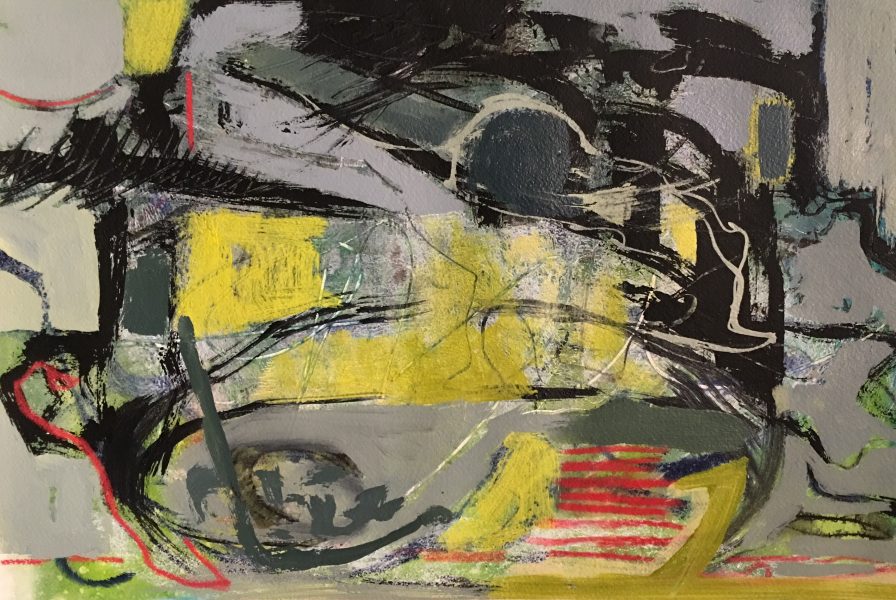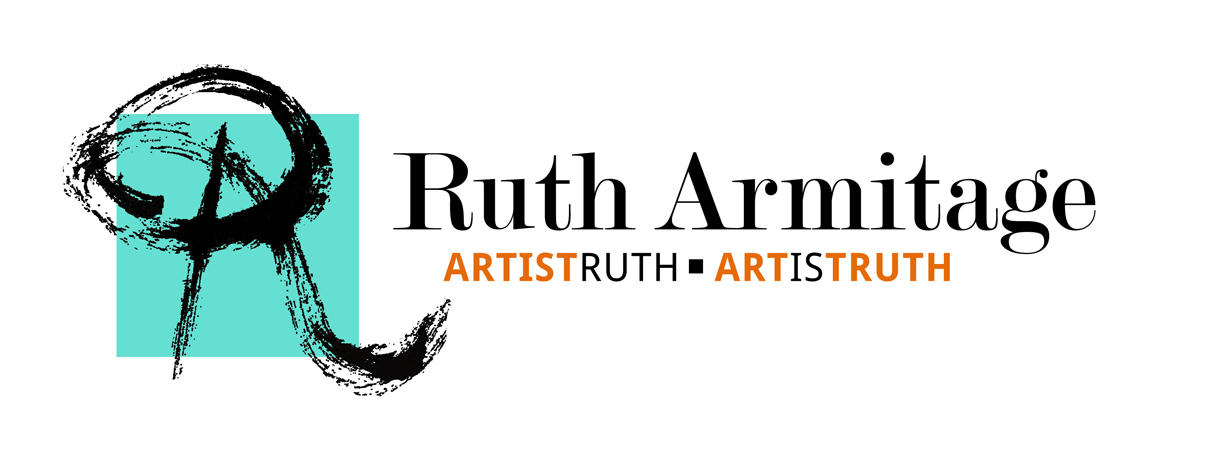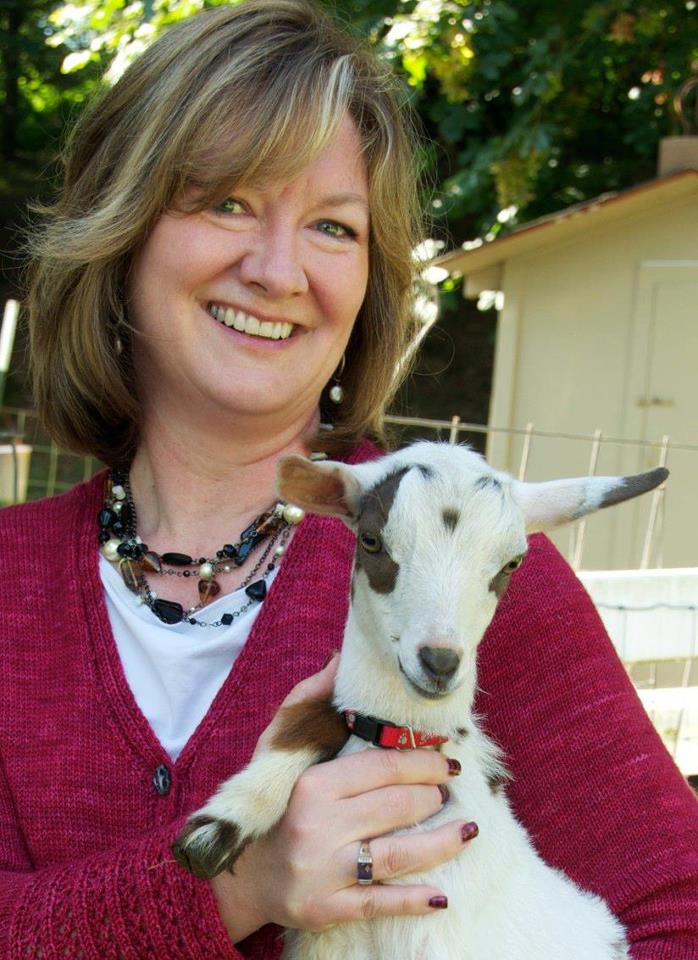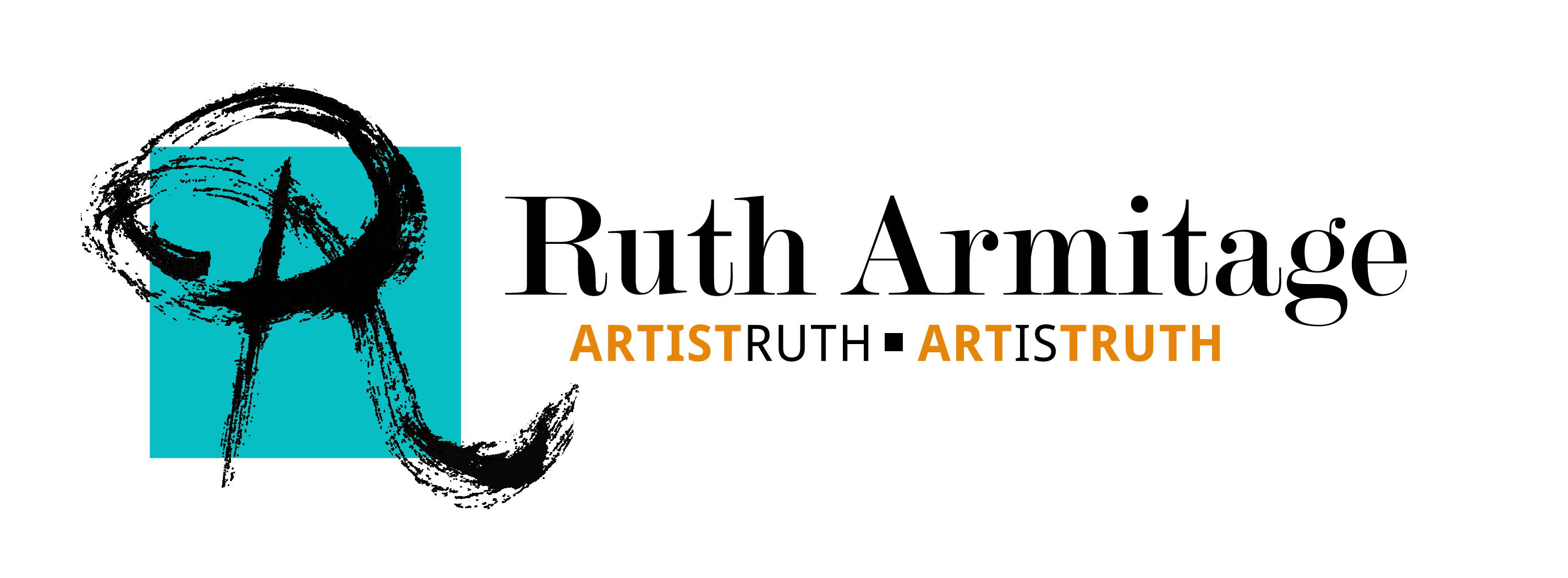Pareidolia is a psychological phenomenon in which the mind responds to a stimulus, usually an image or a sound, by perceiving a familiar pattern where none exists. Classic examples might be seeing a face in the full moon, or imagining that cloud shapes represent a dragon or dolphin.

Cloud-gazing sounds so good today!
I think that we are hard-wired by our survival instincts to identify subject matter in abstract shapes. Who hasn’t imagined a shadow in the woods to be a bear or some other predator? This subject came up in two of my recent workshops about abstract art. Viewers often ‘find’ subject matter that the artist did not intend. Once an image is identified, it is hard to ‘un-see’ it.
It Happens to Us All
Pareidolia is natural, but a sophisticated art-viewer knows that it is more acceptable to ask questions than to volunteer what their imagination has come up with. For example, a viewer might ask the artist “Am I meant to see a figure implied here?” If the artist says yes, great! You can discuss what you see, what it means etc. If the artist says no, an appropriate response is to keep your perception to yourself and discuss the artist’s intentions further. Viewers can follow up with another general question such as “What was your intention for the work?”
Interpreting art is a delicate balance between the artist’s intention and the viewer’s response. Both are important, and sharing our viewpoints can be mutually satisfying. In fact, artists love it when viewers are interested enough to ask about the work. Share your experience: does pareidolia inspire or frustrate you?
The internet has many good articles about understanding abstract art. The Collector’s Corner of Art Mine summarizes it this way:
The most important thing to understand about abstract art is that it does NOT have to have a meaning, narrative or even a singular explanation.
The main purpose of abstraction is not to tell a story, but to encourage involvement and imagination. This art form is mostly about providing its viewers with an intangible and emotional experience – more often than not, the experience is completely different for every individual depending on their personality and state of mind.
Therefore, it is really up to the viewer to decide whether the painting in front of them has any meaning or provokes any emotion. As we mentioned, abstract art is all about freedom.
That’s a fitting subject for Independence Day!
Further Reading:
Click here to read the whole article from Art Mine. You’ll also find a list of Do’s & Don’ts for discussing abstraction. I’ll have another vocabulary post coming up soon. Watch this space! New workshop listings coming soon too! I’m always interested in your reaction to new work. Leave me a comment, and don’t forget to share with friends.

“Sediment” ©Ruth Armitage, Acrylic on Paper 15×22″
“It is not that the meaning cannot be explained. But there are certain meanings that ar lost forever the moment they are explained in words.” -Haruki Murakami



Thank you for repeating the meaning of pareidolia.
A few years ago The problem for me when a viewer shared that they saw, I kept seeing their vision intruding on my freedom to be the image maker.
I had no idea there was a word for it, thank you.
Personally, it frustrates me so much I am afraid I sometimes alienate people who tell me what they see in my work. I feel they are missing out completely, not only on one painting, but on art itself!
The freedom of abstract art is not about a spectator applying the figurative (or the instinctual, “survival)” gaze onto it regardless of the work’s intention, but about letting colour and shape themselves be free, i.e just the way they are.
There is also freedom in the perception (each body’s response to colour and form etc.) and in emotion. Just as in music. No need to justify it, we sense it.
Not so sure making things up and announcing them is “freedom” in art though. Of course many works play with the tension of abstraction and figure, as well as with intentionality and accident, but it’s really not that hard to tell the difference between a thing depicted “creativally” and one that exist only in one’s own imagination.
The fact it’s considered a phenomenon and has a fancy name goes to show that it’s in conflict with the expected response – letting things be what they are in order to form a greater picture! I’m laughing here, but I do believe pareidolia is grounded in a sort of confusion between nature and art, as well as in the (very human, yet problematic) unwillingness to deal with vagueness and uncertainty. Because, isn’t that what interesting art is? Comlex!
Thanks for adding to the conversation, Victoria!